How has the fluctuation of the economy post–pandemic and amid the cost-of-living crisis affected the second–hand clothing market and charity shops?
Covid has been replaced with another c-word: The cost-of-living crisis, which is having a similarly disastrous and yet different effect on our current economy.
But it’s not just the change in our pockets that is affecting our shopping habits as sustainability and slow-fashion gain traction in our consumer-driven market.
Research by several charities and organisations all support this growth in second-hand shopping, or thrifting, as it is often deemed. Barnardo’s found that over 3% of all retail units are charity shops- that is more than 11000 in the UK. Statistica also reported that charity shops saw 746 million in GDP in sales in 2020, which is very impressive when we could not even leave the house for six months.
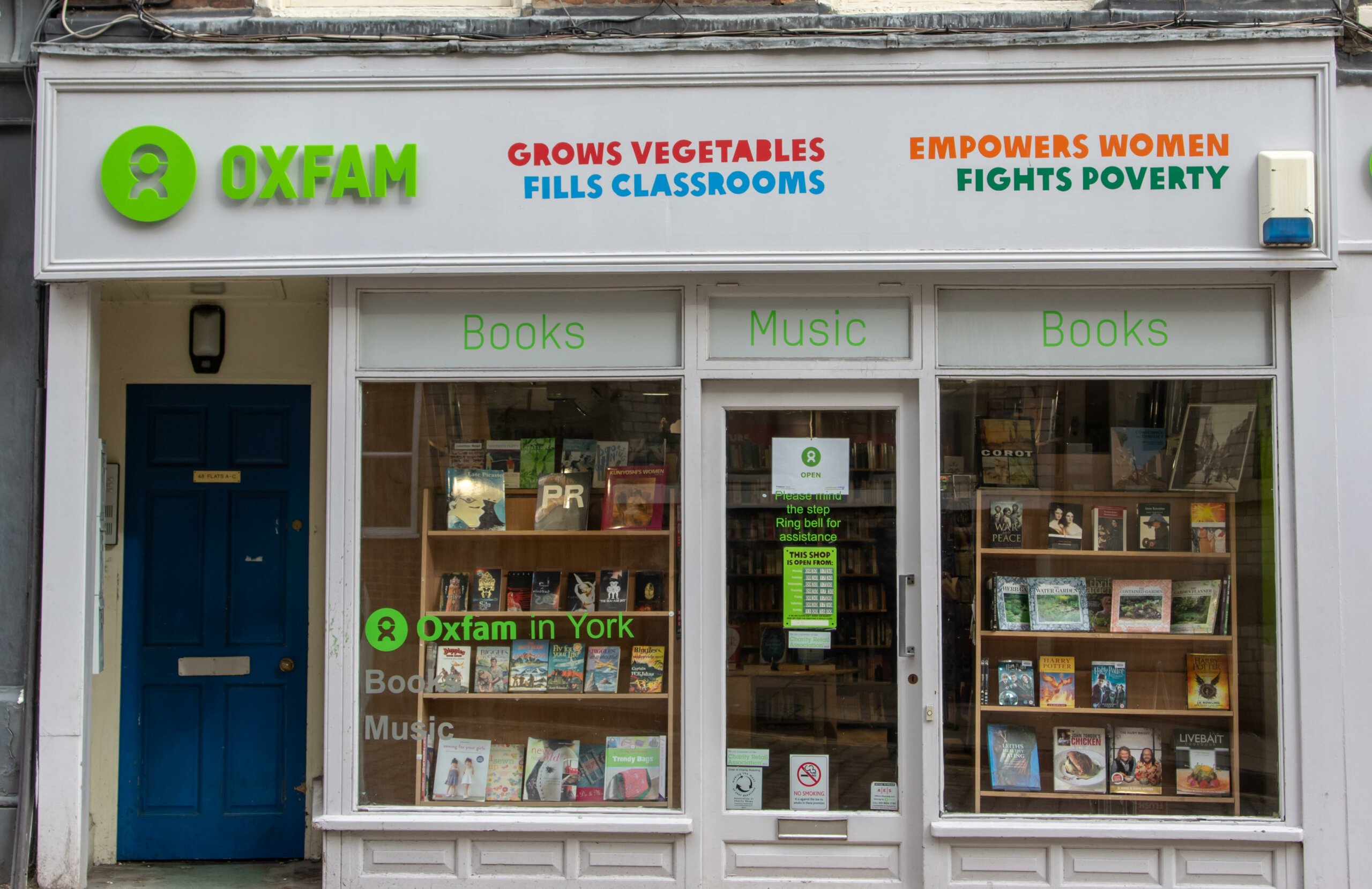
High street charity shop Oxfam. Image from Alamy
Heidi Rose, Oxfam’s donated goods strategy lead said: “The culture around second-hand shopping is changing, with more people opting for pre-loved fashion rather than always buying brand new.”
It also appears that this change is happening largely in gen-z, with Depop, an online resale site that has grown exponentially in the past three years, reporting that 90% of its users are under 26 years old. This growth in a young consumer base is also due to the trendiness of second-hand shopping, with TikTok videos now dedicated to charity shopping hauls as opposed to the previous Primark and H&M hauls on youtube from the early 2010s.
“With 44% of 18-35-year-olds in the UK buying more clothing now than they did last year, our research finds that 53% of people have been increasingly turning to second-hand shopping on marketplaces such as Depop as a way of saving money in 2022,” said a spokesperson for Depop.
This move to online resale sites could also be due to the transparency around the sale of the garments and their sustainability. Popular high-street stores are notoriously vague about their environmental impact, which has re-directed young, climate-conscious buyers to more sustainable methods of shopping.
However, there has been conversation around how resold items on such sites as Depop are sourced, with sellers often bulk buying from charity shops and then re-selling these clothes at an inflated price after slightly modifying them, especially in cases of popular high-end brands such as Carhart and Diesel.
Depop refutes these claims, saying: “those who buy second hand from sites such as Depop estimate they are saving up to 25% per item – an average of £2.8 billion a year across all purchases.”
To keep up with this rise in online second-hand sales, some charity shops have opened online stores too, such as the Oxfam online shop. But trends in google search terms reflect a high and more noticeable popularity with sites such as Depop.
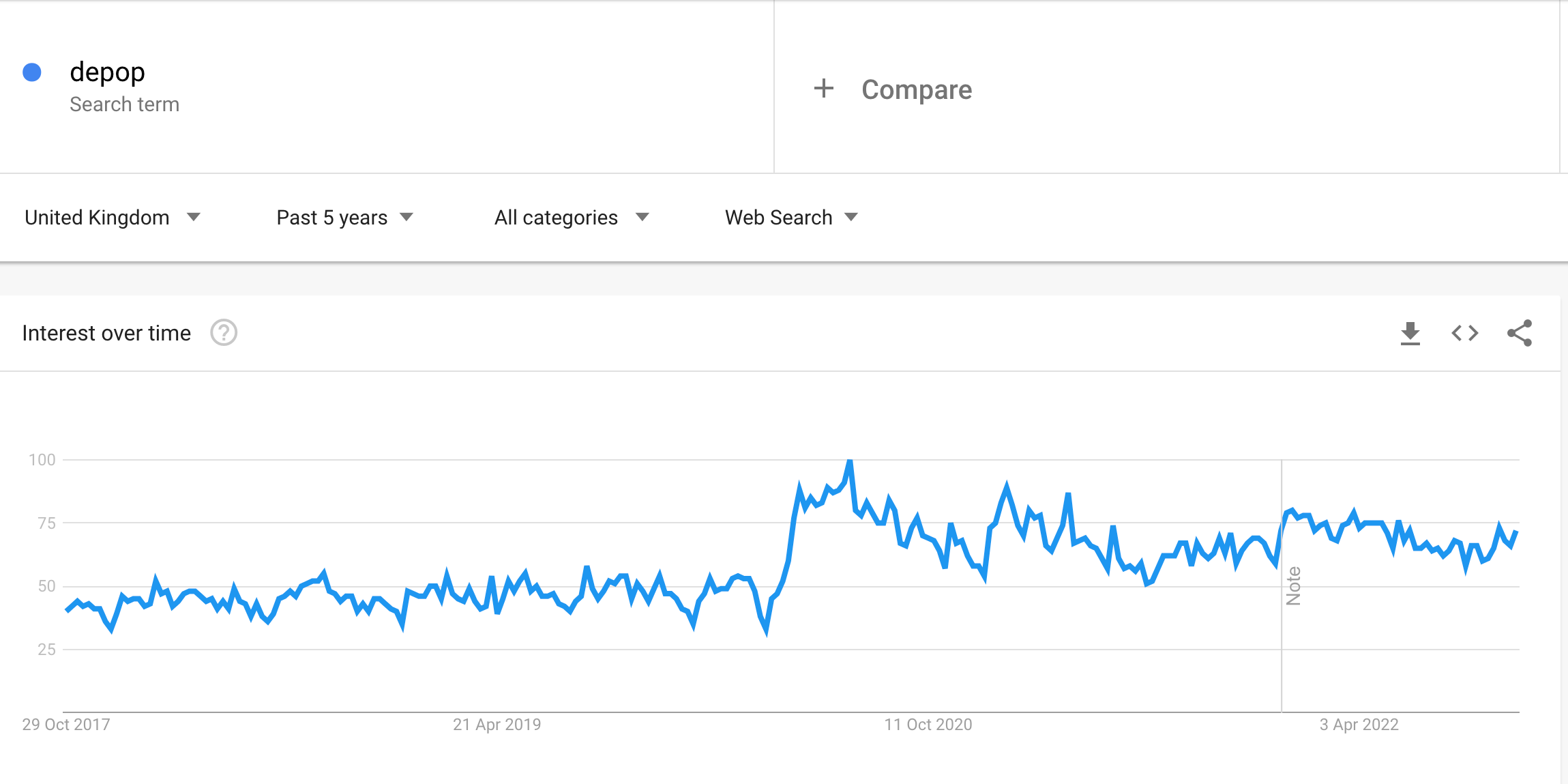
Depop in search trends
Depop has shown growth through the pandemic, but that has shown a slight decline recently.
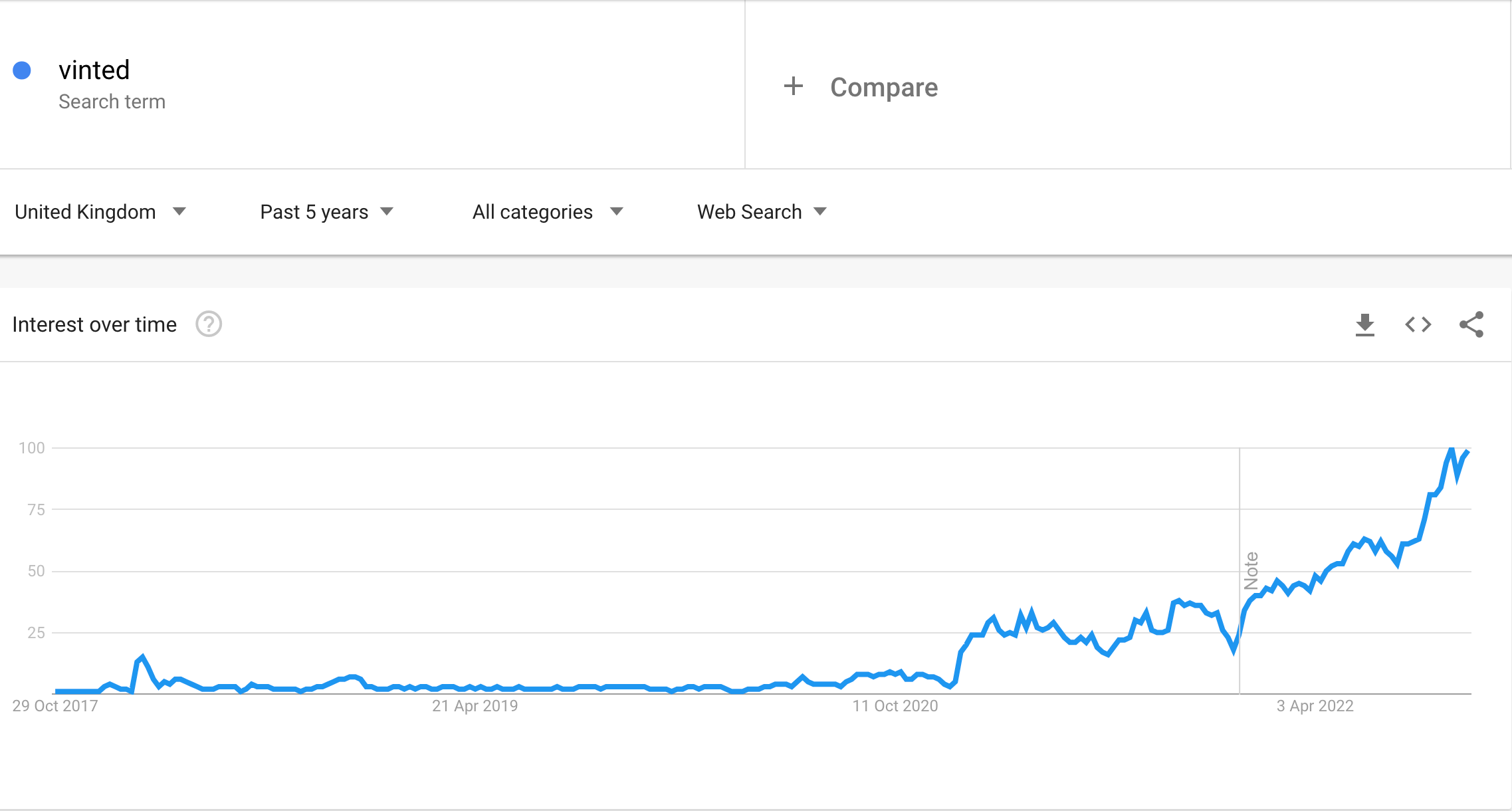
Vinted has seen a steady rise in searches, especially during the cost-of-living crisis
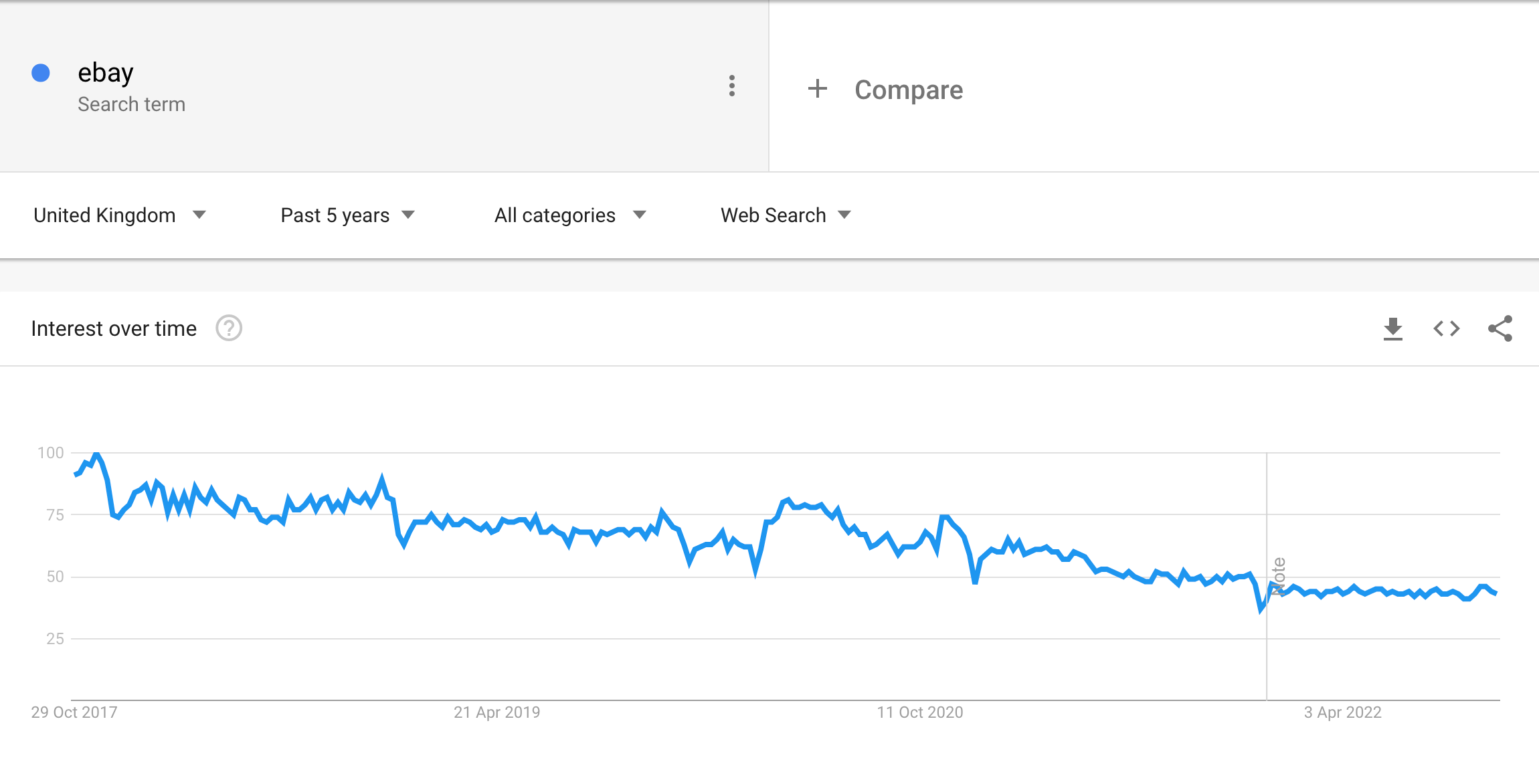
ebay in google search terms
eBay has seen a decline in searches over the past year, with a very small peak in recent months.
These trends in searches might be due to the format of the sites, with Depop and Vinted offering the possibility to negotiate and a more personal experience, as users speak more directly to each other than on eBay.
Apps such as Depop also offer the chance for enterpenurialship, with users setting up successful businesses via the platform, taking away the need for physical units and reducing the cost to start such a venture, which we saw a lot of people doing over the pandemic.
This need to negotiate and bargain could be a clear link to the cost-of-living crisis in which members from all areas of society are attempting to cut their spending.
“Second-hand platforms like Vinted can be a good place for people to mitigate the impact of the cost of living on their wallets by selling things they no longer need or when looking for more economical ways of purchasing items,” said a spokesperson for Vinted.
Furthermore, the accessibility of these online sites can further help to mitigate costs, as traditional second-hand shopping, via charity shops or the growingly popular kilo sales, involves a lot more travel and time, often accumulating more costs for the buyer and having a more significant impact on the environment.
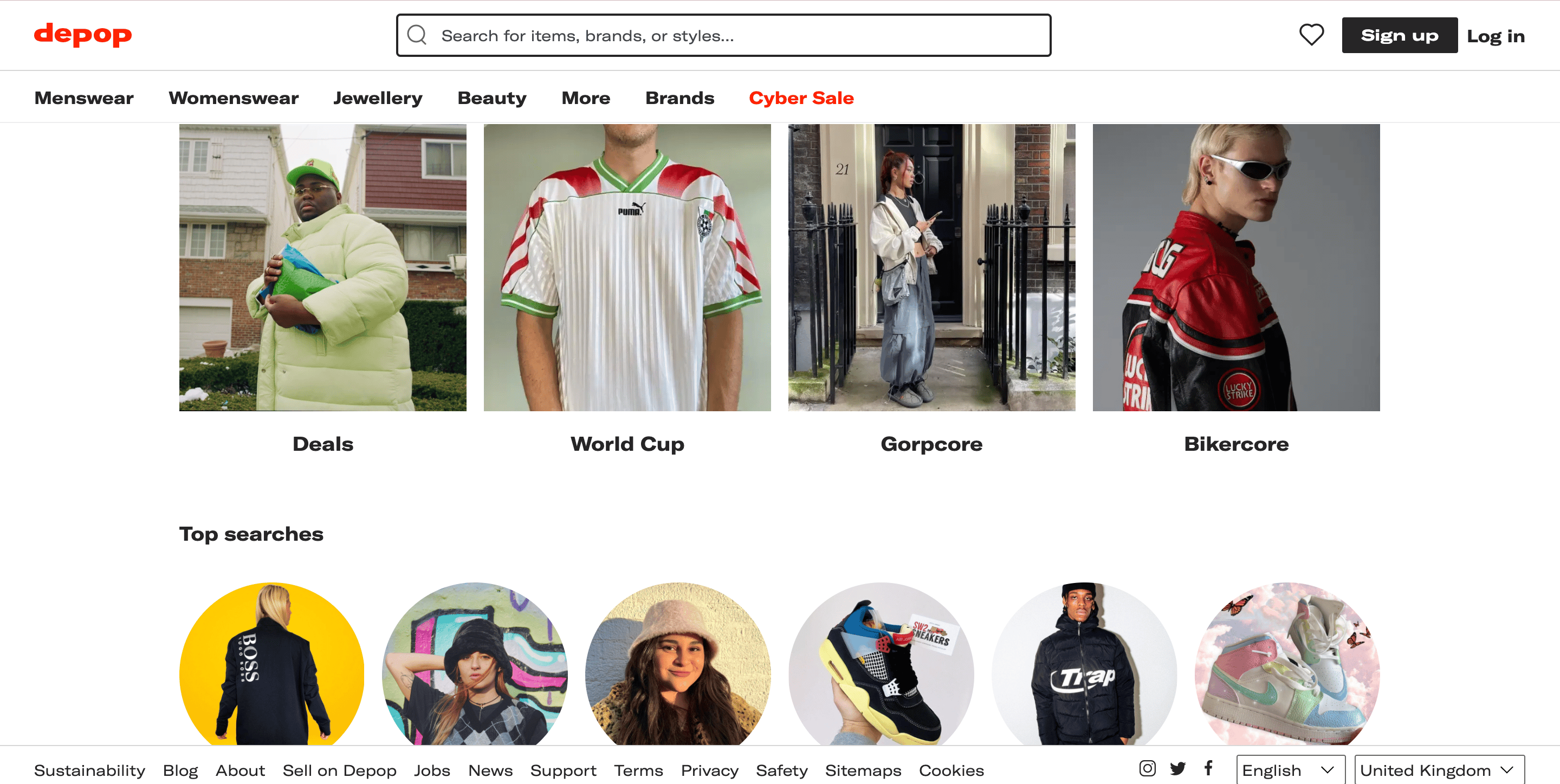
Depop landing page
This move towards second-hand shopping will continue as the economy continues to struggle and shoppers become more attuned to this method of buying. But as the death of the traditional high street persists, this could pose a problem to the world of fast fashion, which is currently the main source of second-hand garments for charity shops.
The speed and trend-driven nature of fast fashion helps to feed the resale sites and low-cost prices of their stock. The customisation and alterations of these garments by professional resellers is often what drive the prices higher and cause issues around the gentrification of ‘thrifting’.
Whilst second-hand shopping is undoubtedly a better more sustainable choice than traditional fast fashion, it does still have its issues and these may only continue to grow.
Head to @fashionnorth to tell us your thoughts.
